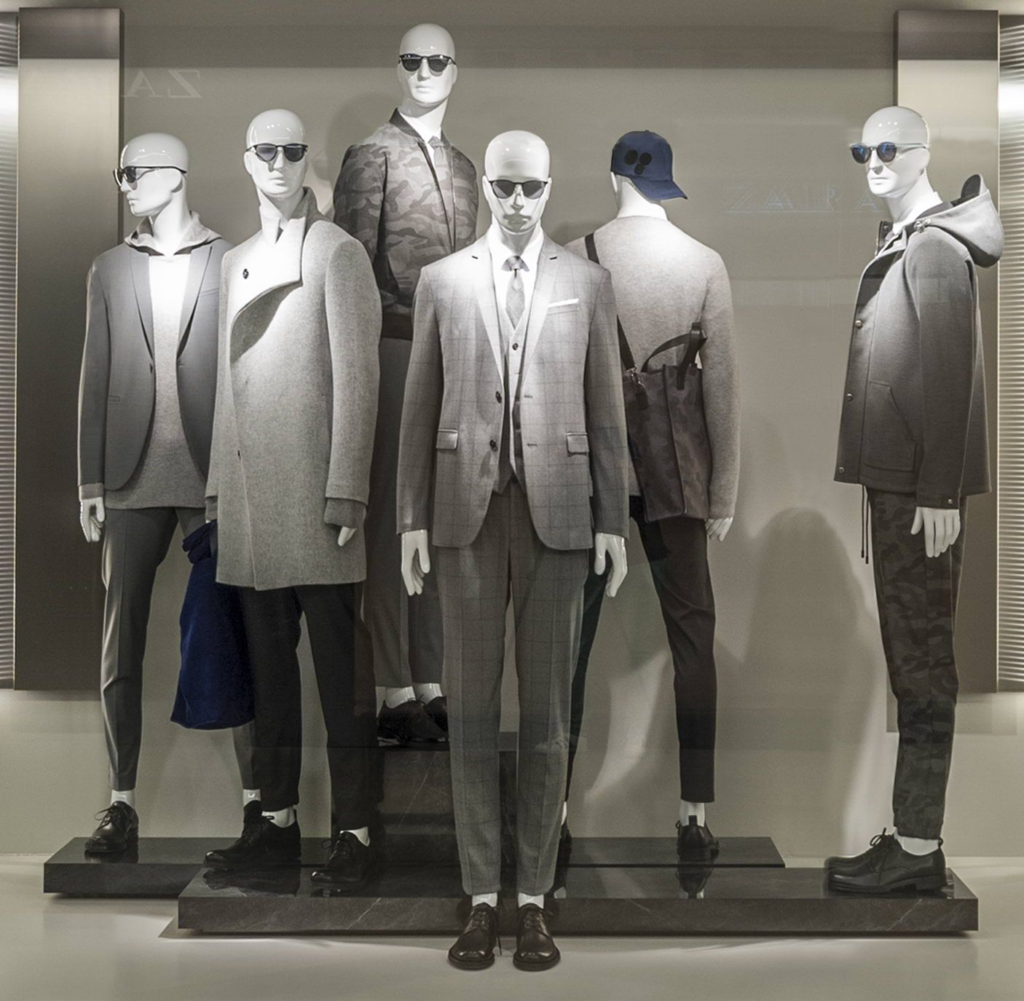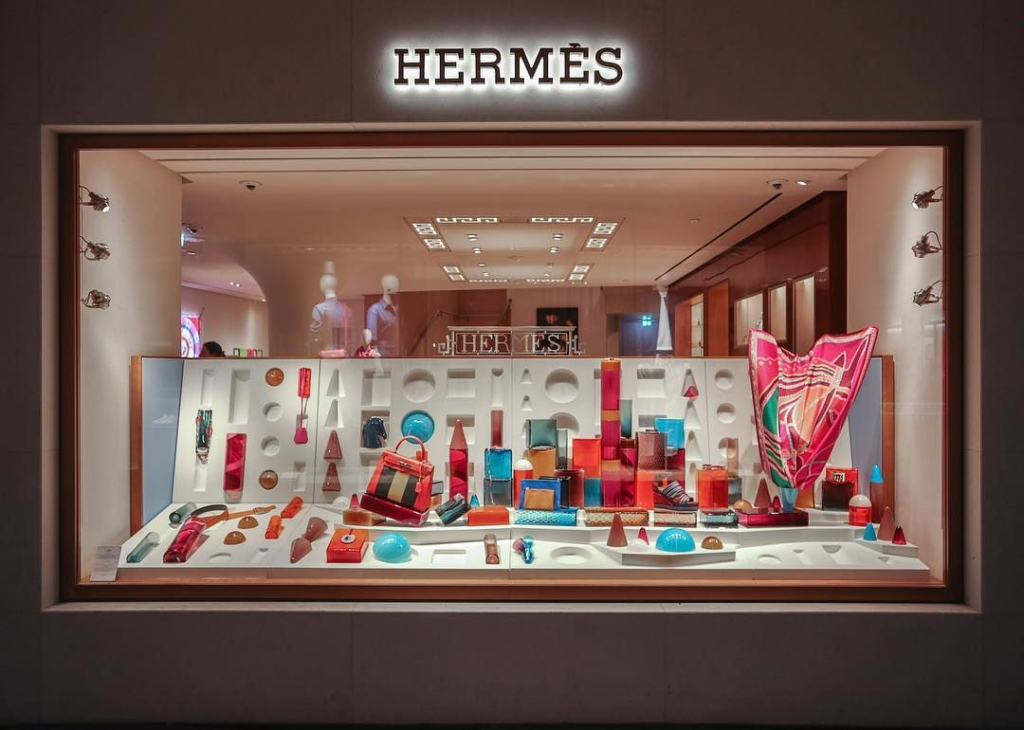What is Visual Merchandising?
Visual merchandising refers to the act of organizing and showcasing goods in a shop setting. It aims to draw attention to items and their characteristics, reassure customers, enhance comfort levels, and stimulate sales. Although visual merchandising first appeared in actual retail locations, businesses are increasingly using the same strategies to online marketplaces. To represent a brand’s image and look, effective visual merchandising employs a variety of tangible elements, such as:
- Color: Different hues reflect various tones and moods. It’s important to pick colors that go with the branding of a business.
- Lighting: A commercial space’s lighting may assist create a certain atmosphere and highlight particular items or sections of the store.
- Space: How consumers walk through a business, where they spend more time, and what they see are all influenced by the architecture and spacing of the building.
- Sound: Companies and brands may enhance the ambiance in their business space by playing loud rock music or ambient nature sounds.
- Smell: Humans can associate different smells to distinct feelings. Hence, brands can use this technique to associate certain smells in accordance with their branding strategy.
- Technology: Technology may increase consumers’ connection with a business through interactive exhibits and digital displays.
Types of Visual Merchandising
There are a handful of visual merchandising techniques. However, here are a few key components of visual merchandising, which are as follows;
Interior Displays
Businesses set up interior displays within their premises, incorporating both merchandise and decorations. Such interior displays include product grouping, product placement, focal points, color and texture, lightening, interactive displays etc.

Store Layout
The layout of a business, including specific product placement, the movement of merchandise from the front to the rear of the store, the location of points of sale, and the location of changing rooms, all fall under the category of visual merchandising. A planned store layout enhances customer experience, optimizes traffic flow and maximizes the sales opportunities.
Store layout includes visual hierarchy, power walls, entrance and decompression zone, store sections and zones, checkout area, store design and fixtures etc.
Mannequins
Mannequin types, styles, and placement can deliver messages to customers. It provides a three dimensional representation of how the product will look or will style if used. The clothing, accessories and lifestyle industry widely use Mannequin. Mannequin captures the attention of the passerby and helps them visualize.
Now, virtual reality, touchscreens and augmented reality have replaced the mannequin.

Point of Purchase Displays
The physical layout, decorations, and signs at points of sale all fall under the category of visual merchandising. Point of purchase (POP) are displays which are placed near the checkout area or areas with high traffic locations within a retail store. The main objective of POP is to capture customer’s attention and to encourage impulse purchase.
Bundling
To demonstrate to buyers how several goods may be used together, products are bundled and shown as a group. It is a marketing technique where complementary and related items are packaged, promoted and lured as a single offering. In bundling technique, businesses or marketers sell the value proposition rather than the product. Bundling provides the opportunity for cross selling and up selling for retailers.

Store Ambiance or Environment
Store Ambiance or Environment is another aspect of visual merchandising. A brand’s tone may be set by the environment of a physical or digital place, which could be calm or loud and energetic. It creates the overall mood and tone of the space. Store ambiance evokes definite emotions and enhances the shopping experience.
The Apple store is well known for its natural and aesthetic bright and inviting lighting.
Window Displays
Window displays are a crucial component of visual merchandising that may draw passersby’s attention to a business, which may result in an increase in customers. Eye-catching visuals, creative props, and effective lighting are used to entice potential customers.

Exterior Fixtures
Exterior fixtures include all the external setup and outside elements by a business to inform, promote or communicate the business element to the customers. Such exterior fixtures communicate the brand image and entice the customers.
Outdoor displays, mannequin, planters, seasonal decorations, patterns and slogans outside the shops are all part of exterior fixtures.
Benefits of Visual Merchandising
Visual merchandising is the first type of selling in the retail industry. The business will sell its product through its window displays before a consumer enters the store. As clients approach the store, persuaded by the window displays, and before the salesperson speaks with them, the layout of the establishment’s interior will determine whether they stay or leave.
As time progresses, stores actively practice new and innovative visual merchandising approaches to promote their business. With that in mind, let’s explore some of the benefits of visual merchandising.
A Storytelling Medium
As a retailer, a brand must tell its distinctive story to its audience. This will decide the brand’s usefulness to the customer. In a crowded market, this will distinguish the brand. Stories are told through visual marketing.
Increased Customers and Sales
Visual marketing is without a doubt the best retail bait. Simply by designing captivating window displays, it may draw in new visitors and boost a store’s foot traffic. It can result in more returning clients for the business. They will undoubtedly make a purchase that will aid to increase sales if they visit the space and enjoy themselves there, including the in-store aesthetic, which includes product placement, sale signs, and floor layouts.
Add Product Value
According to history, the goal of visual merchandising has always been to increase the value of a good or service. With the appropriate visual merchandising strategies, a good product or service with low demand may be deliberately showcased. The company may then sell these goods and services while maintaining its retail pricing. It is a method of using strategy while promoting the goods to buyers.
Improved Shopping Experience
One of the marketing elements essential for establishing the consumer experience is visual merchandising. It can control how a store’s atmosphere and appearance as a whole influence customers’ shopping behavior. Therefore, marketers must make use of visual merchandising to obtain this benefit, which has become increasingly crucial as customers grow more intelligent and practical.
Advertising
The natural form of advertising for a retail brand is visual merchandising. As a store, it offers a variety of options for customers to learn about its products. Promotional signage is one example of a visual merchandising element. Consider it an unpaid advertisement. Businesses can utilize visual merchandising to advertise any other brands or sales channels they may have, such as e-commerce. Consider high-tech platforms that integrate digital assets on physical assets or fixtures to assist a firm convey sales and promotions in an interactive way.
Limitations of Visual Merchandising
Today, businesses are progressively learning that providing customers with a greater experience increases profitability and, as a result, increases brand loyalty and goodwill. Visual merchandising at a business, however, may be difficult, particularly when some retailers, such independent stores, lack a clear understanding of it. It becomes difficult to successfully visual merchandise a business and make a profit in such circumstances. Effective visual merchandising in retail businesses requires careful planning, the creation of strategies, and knowledge of consumer behavior.
Keeping these things in mind, here are five obstacles to visual merchandising that retail establishments must overcome.
Limited Display Space
Allocating space for various physical stores is a carefully thought-out procedure. Therefore, it becomes a very difficult work for visual merchandisers to make modifications and set aside room for visual merchandising props. Additionally, there isn’t enough shelf space in retail outlets to handle the growing quantity of items. This compounds the issue of how to allocate space for the goods.
Limited Flexibility
The most visible spot in the store is what competing suppliers desire for their products to be shown. Large items also need a lot of room and take up a lot of it. Additionally, they require enough circulation area so that customers may observe them from all directions. Additionally, it might be difficult to develop flexibility while working with bulky items like furniture, electric appliances, and home renovation tools. This has a significant impact on marketing activities.
Low Budget
Visual merchandising and related props typically have limited budgets in retail businesses. Profits are increased while expenditures are minimized. It becomes difficult for visual merchandisers to operate within this budget, though. The spending plan might not produce the anticipated outcome. This restricts the VM team’s ability to exert their maximum effort and produce the desired results.
Conflict of Interests
Top management, visual merchandisers, and staff may face a significant challenge in visual merchandising due to conflicting interests. In many cases, the decision regarding product placement is made in advance by top management and the supplier, rather than by the visual merchandiser. Sometimes what the visual merchandiser deems appropriate may be challenging for the sales staff to implement.
Risk of Security
Theft and robbery are common at retail establishments and supermarkets, even in broad daylight. Retail businesses frequently experience this issue, and even those with security cameras and monitoring technology still experience it. Therefore, merchandisers need to make sure that the security of the goods is taken into account while designing their display.
Ways to Improve the Visual Merchandising Experience
In order to enhance the visual merchandising in their physical environment, firms can do the following:
Conducting Proper Research
Brands may do market research to find out what the target audience reacts to as well as the interests, pastimes, and lifestyle of their ideal customers. The product of the study can then be put into practice by adding components that will appeal to the target market of the company.
Safety Considerations
Making sure that structures like shelves, signage, and displays are safe and secure. Hiring experts for electrical, building, and difficult installation work, and adhering to all manufacturer installation and maintenance instructions.
Promote Engagement
Customers’ degree of interaction with a brand may rise as a result of using interactive displays. Displays that include links to a business’s social media pages or website can enhance traffic to those pages and boost their search rankings. As more people become aware of their distinctive qualities, using innovative, interactive displays may help generate recommendations to their shop.
Keeping Up with Trends
Keep abreast of market trends, such as those in design, art, and fashion, that might be applied to the retail environment. For instance, if monochromatic fashion is trending, companies might use monochromatic displays or group similar hues together in their store.
Hiring Consultants
To examine a company’s space and provide advice to better reflect their brand, adopt best practices, promote repeat business, and boost sales, companies should think about employing a professional merchandiser. Businesses may locate merchandisers at interior design firms, fashion and design institutes, as well as online and in trade periodicals.

